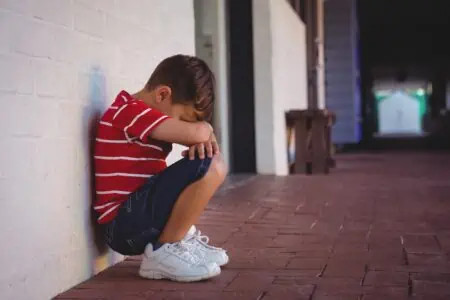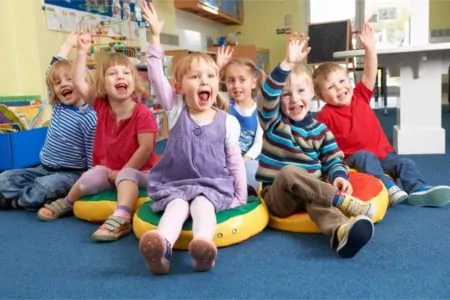Child abandonment occurs when a parent or guardian deserts a child without providing necessary care or ensuring their safety. This can range from physical neglect at home to leaving a child in a public place with no intention of returning.
It is a critical, dangerous issue affecting thousands of vulnerable lives in the United States and millions more globally. To help you understand the scope of this crisis, we have compiled the most essential child abandonment statistics and facts.
Read on for insights into the shocking rates, the link to human trafficking, and the prevention strategies working to keep children safe.
Key Facts About Child Abandonment
- Global data is scarce: There is no single official record for the total number of children abandoned worldwide.
- US estimates: Approximately 7,000 children are abandoned in the United States annually.
- Legal options exist: All 50 states have enacted Infant Safe Haven laws, allowing parents to safely surrender newborns without prosecution.
- Trafficking link: Victims of abandonment face a significantly higher risk of exploitation and human trafficking later in life.
25 Child Abandonment Statistics and Facts
Child abandonment is a complex cruelty issue that transcends borders. Below, we break down 25 critical statistics and facts derived from government research and sociological studies to give you an accurate picture of the situation.
Worldwide Child Abandonment Facts
Abandonment is not unique to any single country; it is a global crisis. It includes physical desertion as well as severe neglect and maltreatment. While many nations lack concrete data, available reports paint a stark picture of the global landscape.
- Millions of orphans: There are approximately 140 million orphans worldwide (1). However, UNICEF does not specifically track how many of these children were abandoned versus those who lost parents to death or illness.
- SOS Children’s Villages: This organization operates in 135 countries, including the U.S., to build stable homes for abandoned children (2). They focus heavily on prevention by supporting at-risk families before abandonment occurs.
- Defining abandonment: Abandonment is more than just leaving a child on a doorstep. It includes leaving a child alone for extended periods, failing to provide food or hygiene, and forcing them to live in unsanitary conditions (3).
- The survival instinct: Abandoned children often wander the streets during the day and seek their own shelter at night. To survive, many are forced into dangerous situations like child labor or theft.
- US prevalence: Estimates suggest that about 7,000 children are abandoned in the U.S. every year.
- Institutional disparities in Europe: In Western Europe, only four percent of children in institutions were there due to abandonment (4). In contrast, abandonment accounted for 32 percent of institutionalized children in Central and Eastern Europe.
- Specific country data: In an EU project on abandonment, Slovakia reported the highest rate with 4.9 abandoned children per 1,000 births, followed closely by the Czech Republic at 4.1 per 1,000 births.
- Illegal infant abandonment: In 2021, the U.S. recorded 31 cases of illegal infant abandonment where babies were found in dumpsters or backpacks (5). Tragically, only nine of these infants survived.
Child Trafficking and Exploitation
There is a direct and terrifying pipeline between abandonment and human trafficking. Without protection, these children become prime targets for exploitation.
- The cycle of vulnerability: Orphans and abandoned children who “age out” of care systems are statistically more vulnerable to trafficking and substance abuse (6). This creates a generational cycle where victims may eventually be forced to abandon their own children due to poverty.
- Missing persons in China: In China, estimates suggest tens of thousands of children are abandoned annually (7). Out of 40,825 missing person cases analyzed, over 16,000 were directly linked to child abandonment.
- Gender disparities: Cultural preferences impact abandonment rates. In China, 70 percent of abandoned children are girls, yet 70 percent of trafficked children are boys (8). The higher black-market price for boys drives their trafficking rates, while cultural bias drives the abandonment of girls.
- The Romanian crisis: A U.S. report highlighted a forced labor crisis in Romania, with child victims increasing from 319 to 370 in a single year (9). Children left to beg on the streets are easy targets for traffickers.
- Global trafficking victims: Children make up 27 percent of all trafficking victims worldwide (10). This equates to nearly four million kids living in modern slavery.
- Digital exploitation: The U.S. sees more than 29 million reports of child sexual exploitation annually (11). This includes the production and consumption of abusive material, which is a severe form of neglect and abuse.
Consequences of Child Neglect
The impact of abandonment goes far beyond immediate safety concerns. It alters brain development and leaves emotional scars that last a lifetime.
- Cognitive disruption: Neglect disrupts the way a developing brain processes information (12). This often results in long-term behavioral issues and difficulty regulating emotions.
- Biological stress response: Abandonment activates the body’s biological stress systems. This chronic stress can hinder physical development and increase the risk of anxiety, depression, and chronic illness later in life.
- Failure to thrive: Victims often experience “failure to thrive,” a condition characterized by developmental delays, low self-esteem, and destructive behaviors like substance abuse (13).
- Abandoned Child Syndrome: This is a recognized behavioral condition found in children deserted by a parent (14). Symptoms include extreme isolation, guilt, and difficulty forming social bonds (15).
- Risks of institutional care: While foster care is a safety net, children in institutions without a consistent, loving caregiver are at higher risk for developmental setbacks compared to those in family environments.
- Adult anxiety: Adults who were abandoned as children frequently suffer from abandonment anxiety (16). This manifests as people-pleasing, codependency, or sabotaging relationships to avoid being hurt again.
Prevention and Community Initiatives
Abandonment is preventable. Through legislation, community support, and education, we can protect vulnerable families. Here are six key initiatives making a difference.
- Safe Haven Laws: All 50 states have “Baby Moses” laws allowing parents to surrender newborns at designated locations (like fire stations or hospitals) without prosecution (17). This ensures the baby receives immediate care (18).
- European support systems: The EU combats abandonment through social assistance programs, including mother-baby units, free family planning services, and crisis helplines.
- Fighting poverty: Poverty is the leading cause of child abandonment (19). Organizations like SOS Children’s Villages work to empower families financially, providing food, education, and housing to keep families together (20).
- The Charis Project: This initiative helps families weather crises like unemployment or illness (21). They offer education on positive parenting and abuse prevention, helping parents build a stable environment so they don’t feel forced to abandon their children.
- Federal resources: The Department of Health and Human Services publishes a Prevention Resource Guide (22). It supports professionals and communities in strengthening families to prevent child abuse before it happens.
- Prevent Child Abuse America: As the nation’s largest prevention organization, they operate nearly 600 home-visiting sites (23). These sites equip parents with the resources they need to raise healthy children, stopping neglect at the source.
FAQs
Child Abandonment Is an Ongoing Crisis
The statistics are clear: child abandonment is a severe global issue with consequences that ripple through generations. From the physical dangers of trafficking to the psychological scars of neglect, the impact is profound.
However, there is hope. Safe Haven laws and organizations like SOS Children’s Villages are making strides in prevention and care. While there is still much work to be done, awareness and community support are the first steps toward ending this crisis.









